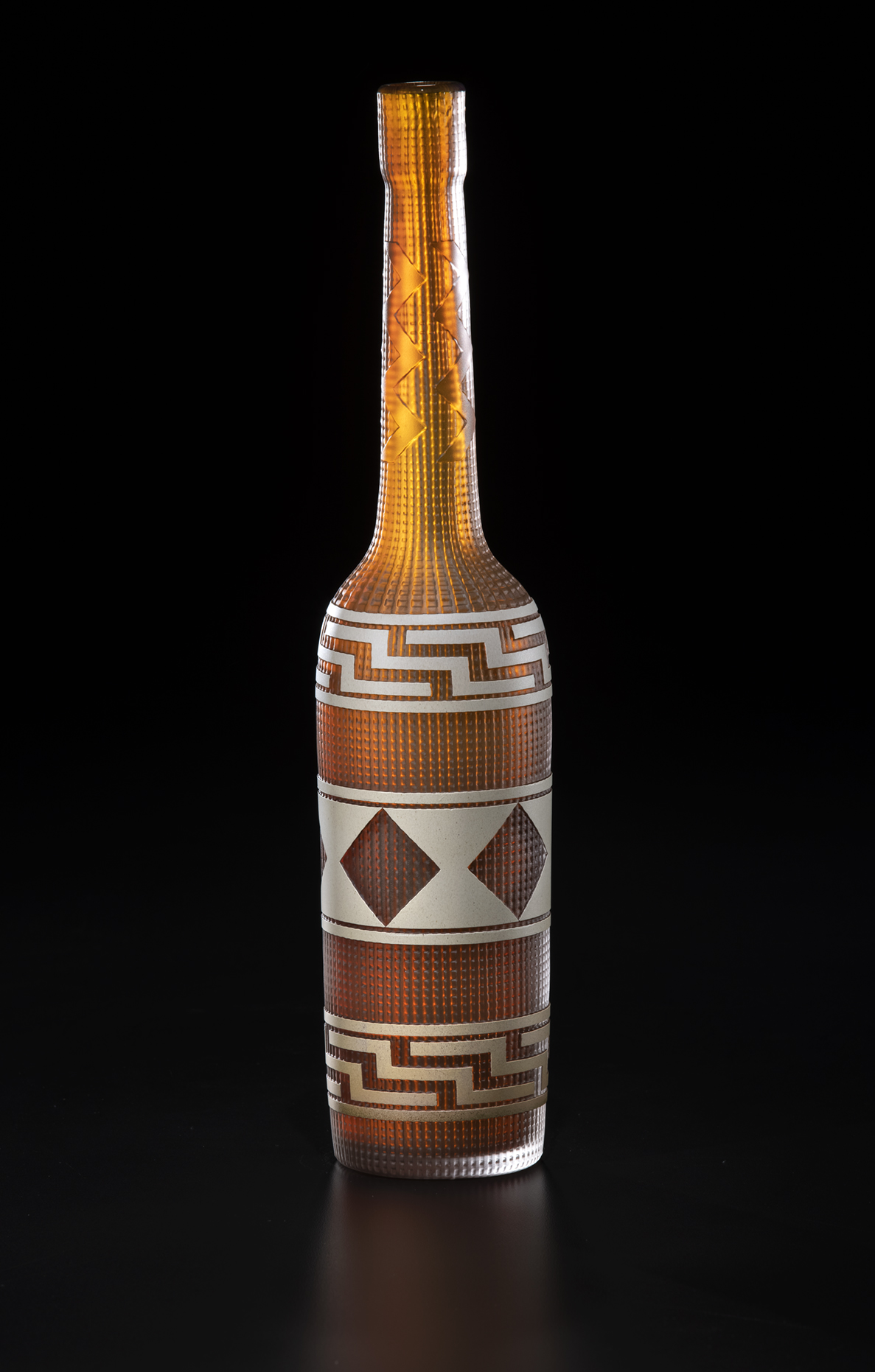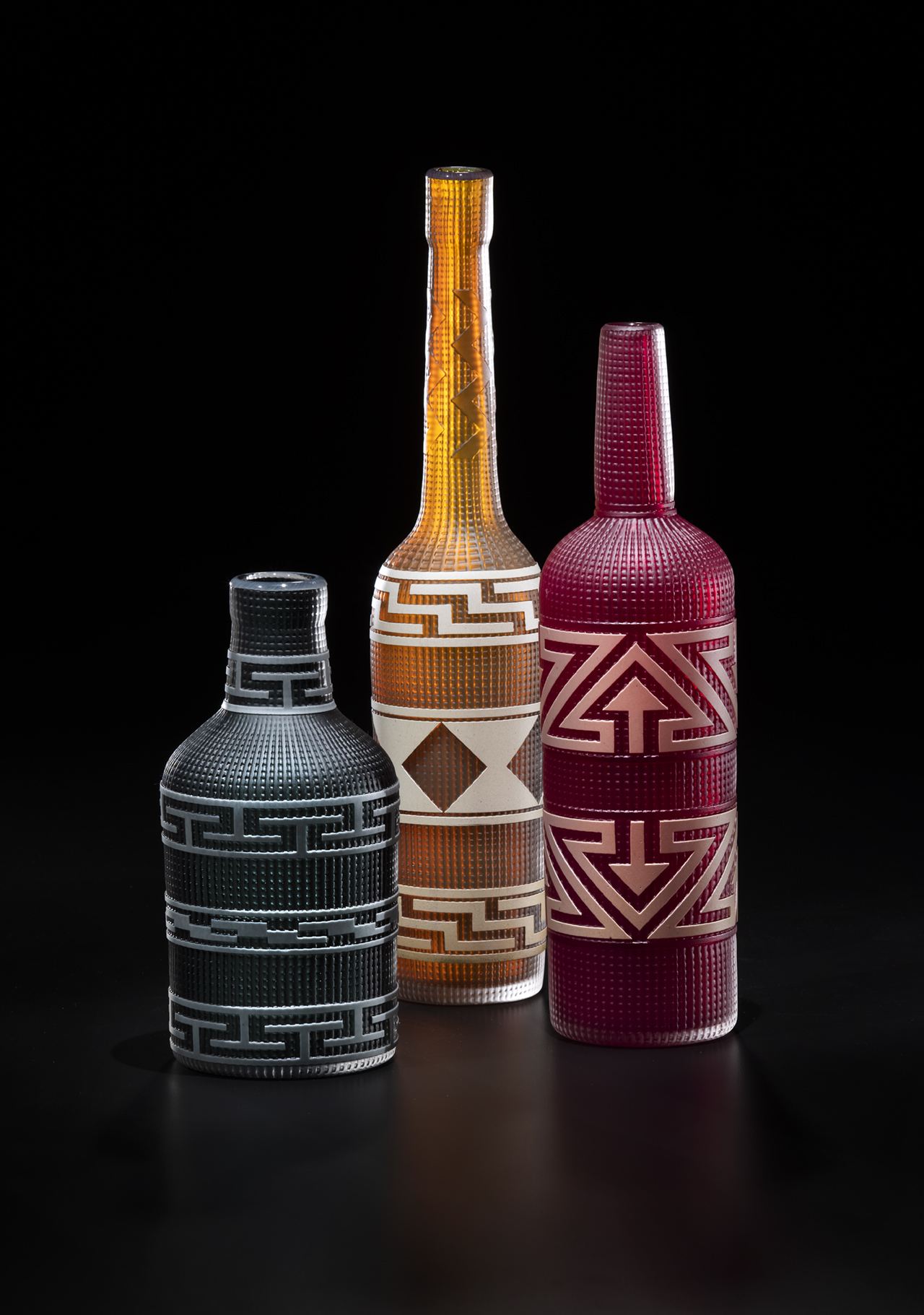Amber Bottle
EXHIBITION:
Fluid in NatureThese brand new bottle forms are an exploration into the woven bottles that emerged on the Northwest Coast in the late 1800s and early 1900s. During this time, the creation of woven baskets for sale to non-Native persons increased dramatically. Basketry became an important source of income for many families. This time period coincides with increased collecting efforts by private individuals and museums. Responding to this new market, Native women began increasing the number of baskets they made, as well as experimenting with new basketry forms and design motifs. Basketry tea cozies and teacups, small “trinket” baskets and glass bottles covered with fine twining are but a few of the imaginative new basketry forms created during this time period. The more closely a weaver was able to tightly follow the contours of a glass bottle, the better she could demonstrate her weaving mastery. These new works by Singletary honor the rise and continuation of this practice by women weavers up and down the Northwest Coast. (Select text is paraphrased from the Burke Museum.) Photography by Russell Johnson.


